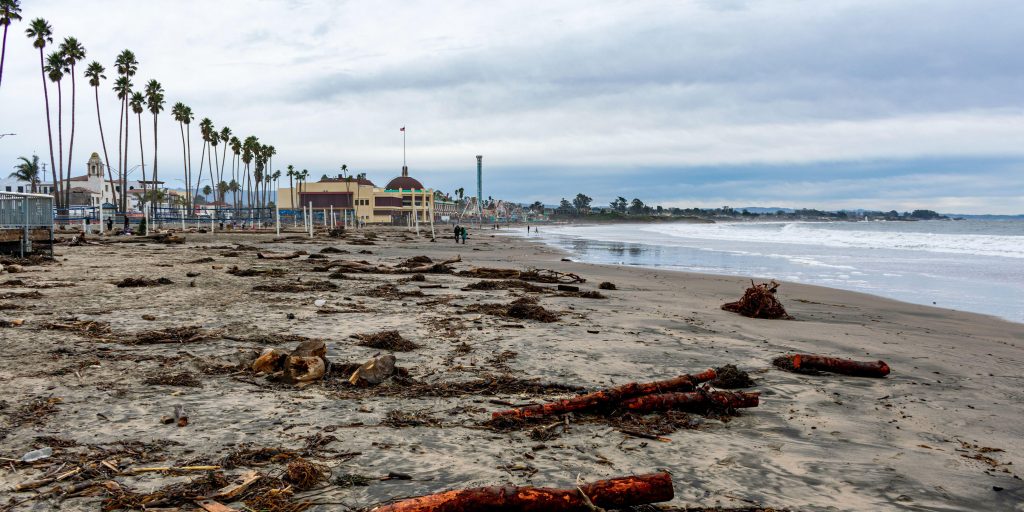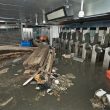In the aftermath of devastating winter storms, local governments in California face a long, challenging recovery
California is reeling after a series of winter storms beginning Dec. 27 that felled trees, triggered rockfalls and landslides, and sent numerous atmospheric rivers sweeping through the previously drought-stricken landscape. So far, 22 people have died and thousands have been displaced. Now, with the rain tapering off, local administrators across the state have their work cut out for them.,
“It’s not localized,” said Jason Grant, director of advocacy at the International City/County Management Association, noting floodwaters have washed away roadways, mudslides have buried culverts, and entire hillsides have fallen off overnight. “Once those floodwaters recede, there’s a lot of work that local governments have to do.”
The cleanup itself will take a huge amount of effort and money. In this effort, Pres. Joe Biden, who surveyed the damage Thursday, issued a disaster declaration, making available federal funding for the affected counties of Merced, Sacramento, Santa Cruz, Monterey, San Luis Obispo and Santa Barbara. Business owners and taxpayers are additionally eligible for emergency tax relief from late payment interest and penalties.
“They got more rainfall in a single day than they get in an entire year in parts of the state,” Biden said in a press briefing Thursday. “Drenching rains, powerful winds, floods, landslides, but you don’t feel it until you walk the streets.”
In the immediate response, an executive order issued by California Gov. Gavin Newsom includes provisions that help communities make sure they have enough staffing for the emergency response by waiving work hour limitations for retired annuitants. The provisions will also help health care facilities stay open and support schools that have been affected by flooding, according to a press statement. Fees to replace records such as marriage and birth certificates have also been waived.
One of the more recent storms that swept through the state was its worst in 30 years, according to a statement from the Sacramento Municipal Utility District (SMUD), which identified at least 80 downed power poles and expects the numbers to “grow significantly as assessments are completed.”
In the aftermath, communities are pulling together.
“It’s remarkable—just walking through a number of the small businesses—how many of the small business men and women said people showed up, said they just needed one thing, which was gloves, and then took it upon themselves to clear out the debris,” Newsom said at a press briefing last week. “That’s the spirit that marks these moments, and that’s the spirit that will mark many moments as we work our way through.”
Longterm, Grant said communities will look at better, more resilient ways to put the pieces back together.
“What does rebuilding on that property look like, how do we make sure we are more resilient?” Grant said. “If there are increased landslides, mudslides that are occurring, what is able to be developed on hills or mountain areas? How much of a surface area can be impervious? If it’s an impervious surface, that water runs off somewhere,” he said.
Floodplains will have to be redrawn. Building and zoning codes will have to be updated to better handle extreme rain events. Many of those conversations will start in-house around land use regulations. They will also require guidance from outside experts.
“In the past, it was ‘how do we get stormwater to the sea as quickly as possible?’” Grant said, noting that a more modern approach to stormwater management is to use wetlands and floodplains as catch basins. “That requires setting aside more land, to have stormwater ponds, for example.”
But while the environmental benefits are clear, “Economically, there is less land that’s developable,” he continued. Beyond cleanup and rebuilding expenses, “There’s definitely a cost.”
Aiding in these efforts, a measure passed earlier this month by Congress under the Consolidated Appropriations Act of 2023 gives administrators flexibility to spend their American Rescue Plan Act allotments on disaster recovery. They can also invest the federal dollars in infrastructure and neighborhood redevelopment. The update is timely for communities impacted in California.
Throughout, the burden of shepherding the recovery effort through and tracking everything for later reimbursement will fall on local governments.
“There will definitely be a lot of work that needs to be done,” Grant said, highlighting “Dams that need to be repaired, culverts that need to be rebuilt, infrastructure that needs to be replaced.”




















